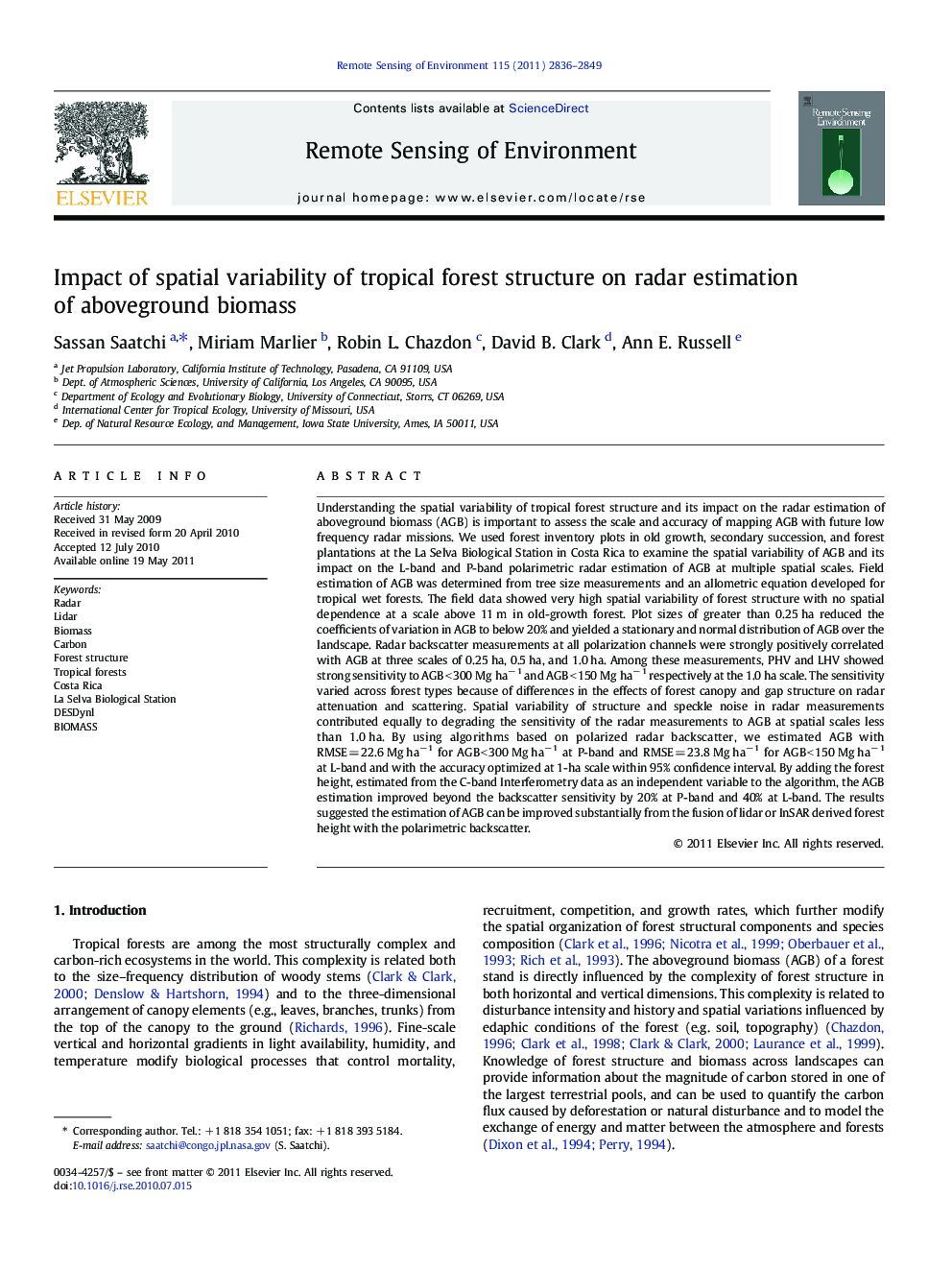| کد مقاله | کد نشریه | سال انتشار | مقاله انگلیسی | نسخه تمام متن |
|---|---|---|---|---|
| 4459233 | 1621286 | 2011 | 14 صفحه PDF | دانلود رایگان |

Understanding the spatial variability of tropical forest structure and its impact on the radar estimation of aboveground biomass (AGB) is important to assess the scale and accuracy of mapping AGB with future low frequency radar missions. We used forest inventory plots in old growth, secondary succession, and forest plantations at the La Selva Biological Station in Costa Rica to examine the spatial variability of AGB and its impact on the L-band and P-band polarimetric radar estimation of AGB at multiple spatial scales. Field estimation of AGB was determined from tree size measurements and an allometric equation developed for tropical wet forests. The field data showed very high spatial variability of forest structure with no spatial dependence at a scale above 11 m in old-growth forest. Plot sizes of greater than 0.25 ha reduced the coefficients of variation in AGB to below 20% and yielded a stationary and normal distribution of AGB over the landscape. Radar backscatter measurements at all polarization channels were strongly positively correlated with AGB at three scales of 0.25 ha, 0.5 ha, and 1.0 ha. Among these measurements, PHV and LHV showed strong sensitivity to AGB < 300 Mg ha− 1 and AGB < 150 Mg ha− 1 respectively at the 1.0 ha scale. The sensitivity varied across forest types because of differences in the effects of forest canopy and gap structure on radar attenuation and scattering. Spatial variability of structure and speckle noise in radar measurements contributed equally to degrading the sensitivity of the radar measurements to AGB at spatial scales less than 1.0 ha. By using algorithms based on polarized radar backscatter, we estimated AGB with RMSE = 22.6 Mg ha− 1 for AGB < 300 Mg ha− 1 at P-band and RMSE = 23.8 Mg ha− 1 for AGB < 150 Mg ha− 1 at L-band and with the accuracy optimized at 1-ha scale within 95% confidence interval. By adding the forest height, estimated from the C-band Interferometry data as an independent variable to the algorithm, the AGB estimation improved beyond the backscatter sensitivity by 20% at P-band and 40% at L-band. The results suggested the estimation of AGB can be improved substantially from the fusion of lidar or InSAR derived forest height with the polarimetric backscatter.
Research highlights
► Radar estimation of aboveground biomass is impacted by high spatial variability of tropical forest structure.
► Tropical forest biomass is stable at scales (> 0.25 ha) larger than the gap dynamics.
► P-band radar polarimetry estimates biomass ranges 200–250 Mg/ha.
► Interferometric forest height estimation improves P-band estimation of biomass beyond saturation level.
Journal: Remote Sensing of Environment - Volume 115, Issue 11, 15 November 2011, Pages 2836–2849